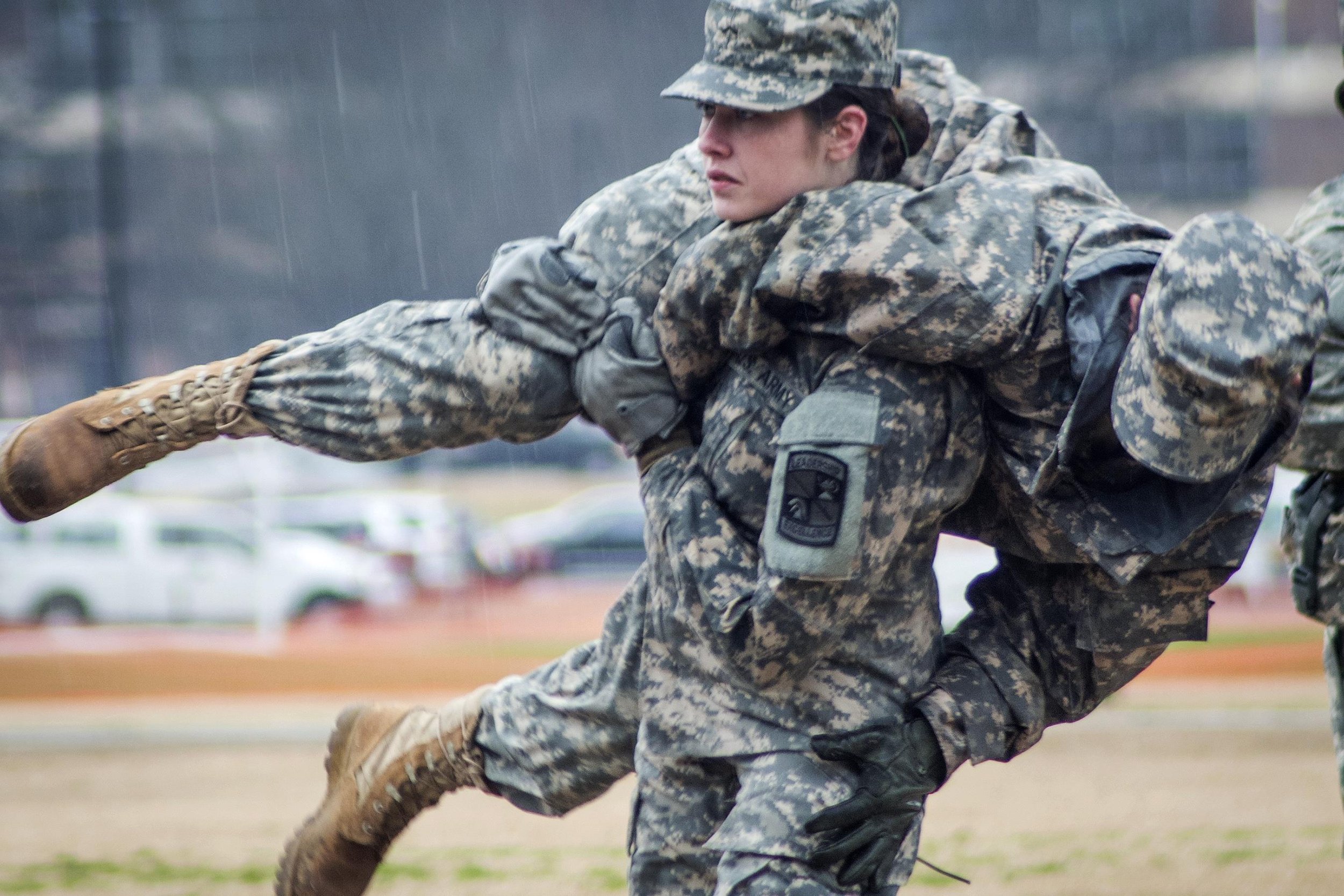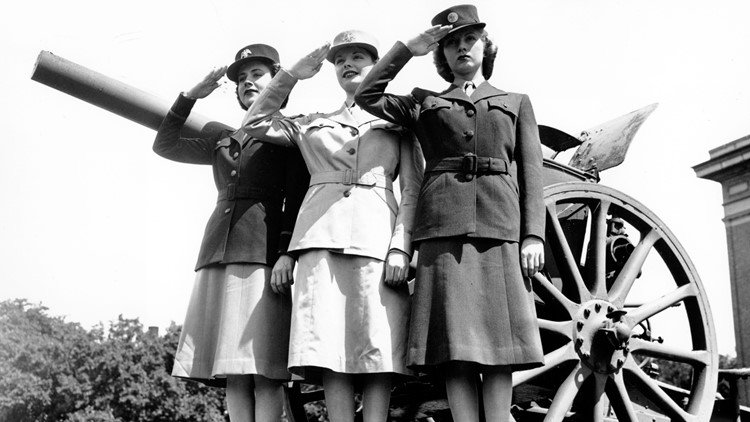Reflecting on a legacy of service in the Army: Women’s History Month
During the celebration of Women’s History Month, I wanted to reflect on a few amazing women soldiers that have helped change our country.
The national 2022 Women’s History Month theme is “Women Providing Healing, Promoting Hope.” This theme pays tribute to the ceaseless work of caregivers and recognizes the thousands of ways that women of all cultures have provided both healing and hope throughout history.
Throughout history, women have made our Army stronger, from the vital roles they played in the Revolutionary War to their service today as Soldiers, nurses, operators, secretaries, codebreakers, military intelligence, troop leaders and maintenance and supply workers. Female Soldiers, Army Civilians, Veterans, and family members are critical members of our Army team.
The strength of the Army comes from its diversity. Developing and maintaining qualified and demographically diverse leadership is critical for mission effectiveness and is essential to national security. Army leaders across the department continue to set the conditions for all Soldiers and civilians to reach their full potential and assign tasks and jobs throughout the force based on ability, not gender.
Making up 16% of the total force, by the end of 2021, the Army had assessed and integrated more than 9,400 women into Infantry, Armor, Field Artillery, Air Defense, Engineer, Field Artillery and Aviation specialties.
In 2021, Secretary Christine Wormuth was sworn in as the 25th Secretary of the Army and the first woman named to the service’s highest position. I proudly serve under her leadership.
Later that year, Lt. Gen. Donna Martin became the first woman to be appointed Inspector General of the Army. The Army had its first all-woman changing of the guard at the Tomb of the Unknown Soldier at Arlington National Cemetery.
And while women continue to take advantage of the opportunities finally open to them through elite training and schools, they are also able to see women in leadership roles previously held only by men.
Gen. Laura Richardson became the second woman in Army history promoted to the rank of four-star general and only the second woman in history to lead a combatant command in October 2021. I’ve been able to meet with her several times and you can see her leadership instantly.
These women embody the Army’s virtues of loyalty, duty, respect, selfless service, honor, integrity, and personal courage. I want to share with you the stories of some women who made our diverse nation what it is today.
During the Revolutionary War, women served the U.S. Army in traditional roles as nurses, seamstresses and cooks for troops in camp.
In England, Maj. Charity E. Adams and Capt. Abbie N. Campbell inspect the first contingent of Black members of the Women’s Army Corps assigned to overseas service. (U.S. Army photo)
Some courageous women served in combat either alongside their husbands or disguised as men, while others operated as spies for the cause. Though not in uniform, women shared Soldiers' hardships, including inadequate housing and little compensation.
Deborah Sampson, a descendant of preeminent Pilgrims Myles Standish and William Bradford, disguised herself as a man and used the name Robert Shurtleff in order to fight in the Revolutionary War. Assigned duties as a scout, even leading a raid on a Tory house that led to the capture of 15 men, she evaded detection for a year and a half, despite being wounded twice.
When she was shot, she pulled out the ball herself rather than have a physician discover she was a woman. Later, when she was admitted to the hospital for a fever, physicians learned – and kept – her secret. She received an honorable discharge in 1783 and became the first woman to receive a full military pension when a court ruled that she had performed the duties of a Soldier.
Women continued to distinguish themselves with selfless service during the Civil War as well. For example, Harriet Tubman, born into slavery and best known for her work guiding dozens of slaves to freedom on the Underground Railroad, was also a scout and a spy for the Union Army. She helped John Brown plan and recruit for his 1859 raid on Harpers Ferry, and organized and a led a group of freed slaves who sought out information about Confederate troops in the Beaufort, South Carolina area.
Her work enabled Union troops to conduct a series of raids to acquire supplies and destroy enemy torpedoes, railroads and bridges.
Tubman is also the first woman to lead an armed expedition in the Civil War, guiding the raid at Combahee Ferry and liberating more than 700 enslaved people. Following the war, she remained active in the Women’s Suffrage movement until being overcome by illness. In 2021, Tubman was posthumously inducted into the Military Intelligence Hall of Fame in a ceremony at Fort Huachuca.
Also during the Civil War, Dr. Mary Edwards Walker served as a surgeon with the Union Army. She was captured and imprisoned as a spy, and when released returned to work as a surgeon at a prisoner-of-war hospital. Dr. Walker was awarded the Medal of Honor by President Andrew Johnson, and is still the only woman to receive this highest military honor.
Dr. Walker knew well the importance of women in the military, once stating, “Let the generations know that women in uniform also guaranteed their freedom.” More than 35 thousand American women volunteered for military service during World War I. The Navy and the Marine Corps were the first military services to recruit women for non-combat positions such as radio electricians, telephone operators, accountants and clerks.
More than half of the women who served in the military during World War I were part of the Army Nurse Corps, and most of the switchboard operators were women. They worked close to or at the front lines, living in bunkers and makeshift tents. Grace Banker, a switchboard operator who served as the chief operator of mobile for the American Expeditionary Forces in the Signal Corps, was awarded the Distinguished 4 Service Medal for her extraordinary service assuring the success of the telephone service during the operations of the 1st Army during the Meuse Argonne offensive in 1918.
Women had been fighting for the right to vote for decades, without much real success. But with women serving overseas, it was hard to ignore the call for equality. The service of these women inspired change across the nation and helped to propel the ratification of the 19th Amendment in August 1920, guaranteeing women the vote.
During World War II, approximately 140 thousand women served as members of the Women’s Army Auxiliary Corps and the Women’s Army Corps.
They provided critical services, such as military intelligence, cryptography, parachute rigging, maintenance and supply. More than a thousand women flew aircraft for the Women's Air Force Service Pilots and more than 60 thousand Army Nurses served, often in harsh conditions.
Mary Roberts Wilson was the first woman awarded the Silver Star for gallantry in combat for her action during the battle of Anzio. With her Army evacuation hospital under fire, Wilson continued to supervise her nursing staff of 50, allowing the hospital to continue functioning. Anna May McCabe Hays worked as an Army nurse overseas during World War II and Korea. She led the Army Nurse Corps at the height of the Vietnam War and in 1970, became the first woman promoted to General Officer in the U.S. Armed Forces. She pushed to expand scholarship opportunities and education for Army nurses. She also supported policy changes, so married nurses who became pregnant were not automatically discharged.
Due to the exceptional service of women in the military during World War II, President Harry S. Truman signed the Women's Armed Service Integration Act into law on June 12, 1948. This bill authorized a permanent presence of women in the military. Women continued to prove themselves over and over during the conflicts in Iraq and Afghanistan.
In 2005, Sergeant Leigh Ann Hester, a military police officer in the Kentucky National Guard, became the first woman awarded the Silver Star since Mary Roberts Wilson in World War II. When her convoy was attacked near Baghdad, Hester maneuvered her team through an enemy kill zone, where she assaulted a trench line with grenades and M-203 rounds, then engaged three enemy soldiers while clearing two more trenches, thus saving numerous American lives.
Specialist Monica Brown, a medic, was the first woman to receive the Silver Star during the War in Afghanistan, and the second to earn the Silver Star since World War II. Brown was riding in a convoy on a routine security patrol when the trail vehicle struck a pressure plate improvised explosive device – commonly referred to as an IED – the initiating event for a planned ambush. As enemy fighters engaged the patrol, Brown ran through gunfire to provide medical care to wounded Soldiers, at one point throwing herself over the wounded to shield them from mortar fire. Approximately 15 mortars impacted within close range as Brown continued to help her fellow Soldiers. As the platoon continued to return fire, Brown once again shielded the wounded from enemy fire and falling brass, ensuring all the wounded were stabilized and ready for MEDEVAC.
Photo by Navy Petty Officer 3rd Class Neo B. Greene III. (Courtesy Department of Defense)
There are common threads that run through the stories of these women and our veterans. These individuals are willing to put the needs of their country above their own. They fight for equality and fairness. And it is this self-sacrifice and determination that ensures that our country not only survives, but thrives.
Today, women have more opportunities than ever in the Armed Forces. About 16% of the Total Army is female and all positions in the Army are open to women. Women are serving in positions that provide full and challenging career and promotion opportunities. We know from history and experience that the contributions and achievements of women make our Army stronger. I said before that the theme this year is: “Women Providing Healing; Promoting Hope.”
We honor the hard work of the women who paved the way for today’s Soldiers. And we honor today’s Soldiers for securing our future – a future for women with more opportunities than ever before. Right now, in a recruiting station, or Basic Training class, or ROTC program are young women, eager to serve, whose energy, talent and leadership will shape our future military.
We know that when women succeed, America succeeds. The strength of our economy rests on whether we make it possible for every citizen to contribute to our growth and prosperity. As we honor the many patriots who have shaped not only the destinies of other women, but also the direction of our history, let us resolve to build on their efforts in our own time. Thank You for reading this and allowing me to honor just a few amazing women in our country.
Mario A. Guerra is a two-time former mayor of Downey and currently serves as the Civilian Aide to the Secretary of the Army. He is also co host of “Talking Downey with Mario and Eric” and can be reached at www.marioaguerra.com




